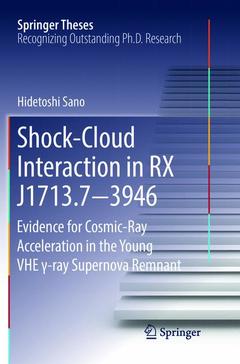Description
Shock-Cloud Interaction in RX J1713.7−3946, Softcover reprint of the original 1st ed. 2017
Evidence for Cosmic-Ray Acceleration in the Young VHE γ-ray Supernova Remnant
Springer Theses Series
Language: English
Subject for Shock-Cloud Interaction in RX J1713.7−3946:
Publication date: 06-2018
Support: Print on demand
Publication date: 11-2016
134 p. · 15.5x23.5 cm · Hardback
Description
/li>Contents
/li>Comment
/li>
This book presents a study of the young supernova remnant RX J1713.7-3946 in order to reveal the origin of cosmic rays in our galaxy. The study focuses on the X-ray and gamma radiation from the cosmic ray electrons and protons in the supernova remnant as well as the emission from the surrounding interstellar gas measured by the NANTEN2 4-m radio telescope at Nagoya University. The gamma rays show a good spatial correspondence with the interstellar gas, which for the first time provides strong evidence of the acceleration of cosmic ray protons. Additionally, the author determines that an interaction between the supernova shockwaves and interstellar gas, referred to as ?shock-cloud interaction,? promotes the efficient acceleration of cosmic ray electrons in the supernova remnant. The book reveals that the interstellar gas plays an essential role in producing the high-energy radiation and cosmic rays, offering vital new insights into the origin and behavior of galactic cosmic rays.




